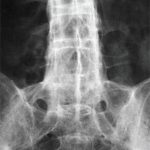Timed Up & Go Test for Predicting Falls in the Elderly
Clinical question: How reliable is the Timed Up and Go Test in predicting falls in the elderly?
Bottom line: The Timed Up and Go Test (TUG) is not very reliable at predicting falls in the elderly. However, clinicians can probably gain insight from observing how an older individual performs the task. LOE=1a, systematic reviews (with homogeneity) of randomized controlled trials.
Reference: Schoene D, Wu SM, Mikolaizak AS, et al. Discriminative ability and predictive validity of the timed up and go test in identifying older people who fall: Systematic review and meta-analysis. J Am Geriatr Soc. 2013;61(2):202–208.
Study design: Meta-analysis (other)
Funding source: Unknown/not stated
Setting: Outpatient (any)
Synopsis: In the U.S., physicians seeing elderly patients for a “Welcome to Medicare” visit are required to perform a fall risk assessment. The TUG is the most commonly recommended screening tool for this, even though it was originally developed to measure functional mobility and not to predict falls. To perform the TUG, the physician times, in seconds, how long it takes for an elder to arise from a chair with armrests, walk three meters with any usual assistive devices, turn, return to the chair and sit down. Essentially, the TUG indirectly measures strength, balance and gait stability. However, it does not reflect poor vision, cognition and medication effects, all of which are common causes of falls. The authors systematically searched multiple databases to identify studies that compared the TUG performance in elders who fall and those who don’t. Two authors independently evaluated studies for inclusion and extracted data, and resolved disagreements with a third member of the team. Although they describe their criteria for assessing the quality of studies, the paper does not report the steps taken to assign the quality ratings. Finally, they don’t report looking for unpublished studies and did not assess the potential for publication bias. Ultimately, they included 53 studies with between 12 and 1,200 patients (N=12,832) with follow-up between four weeks and five years. The studies included comparisons of various combinations of fallers, nonfallers and multiple fallers. Overall, the diagnostic accuracy of TUG in classifying fallers and nonfallers was poor. Additionally, when factoring in other things that might be associated with falls, the TUG does not predict future falls. In high-functioning patients, the average TUG time was approximately 10 seconds and the difference in TUG times for fallers and nonfallers was only approximately half a second. In institutionalized elders, the average TUG time ranged between 15 and 52 seconds for fallers, and 12 and 30 seconds for nonfallers. The average difference was approximately 3.5 seconds, which is not likely to help the clinician risk-stratify patients. To underscore this, the authors report the diagnostic accuracy of TUG times: The TUG time was not much better than flipping coins.



